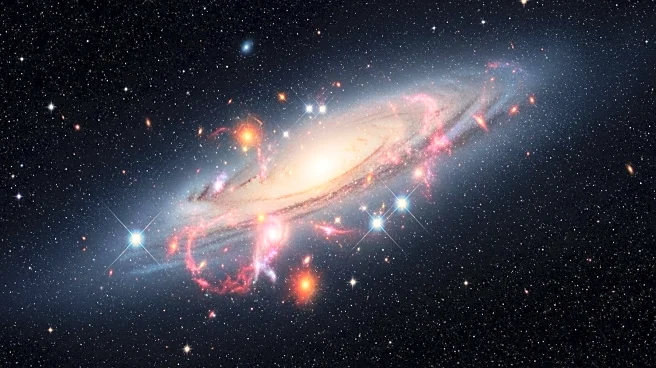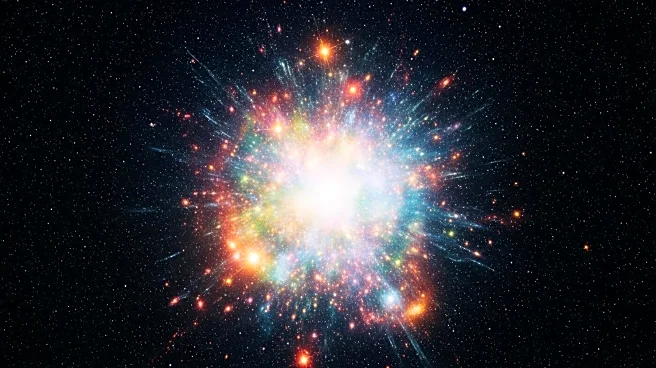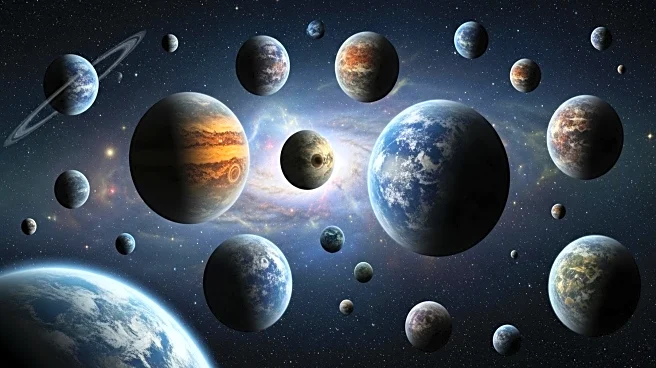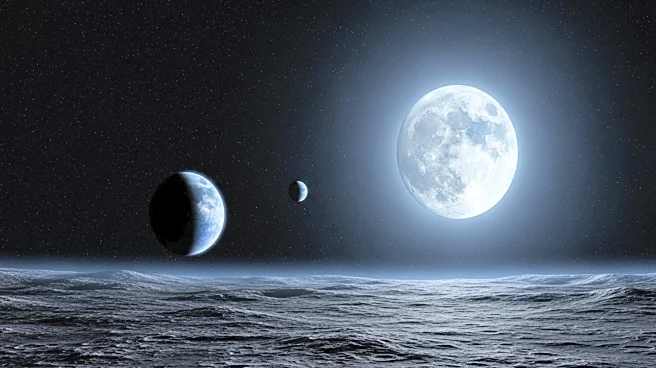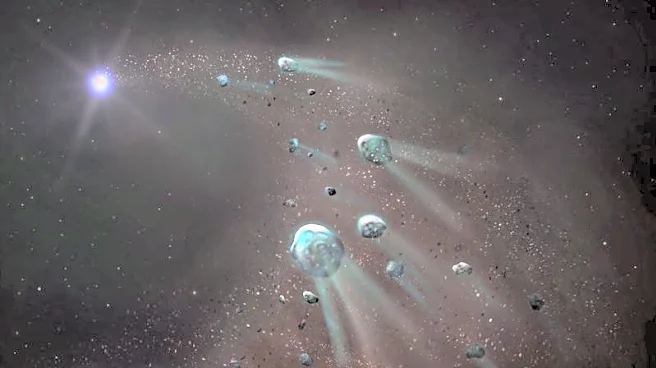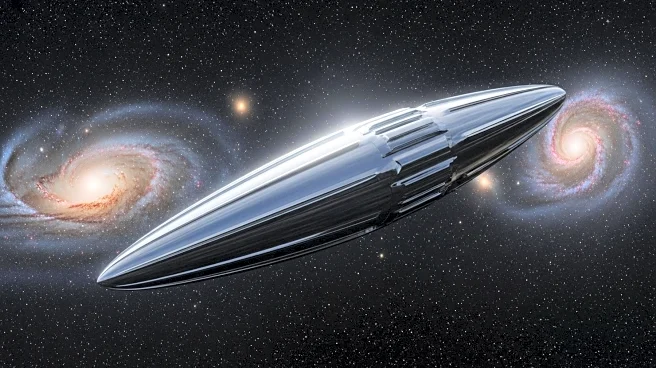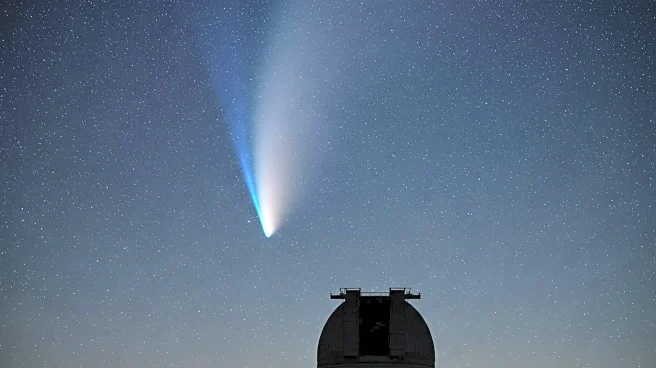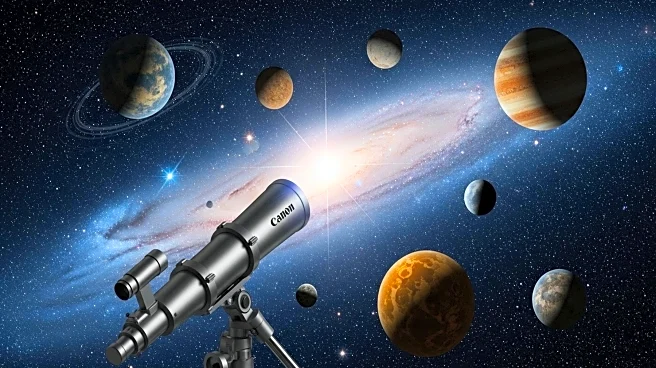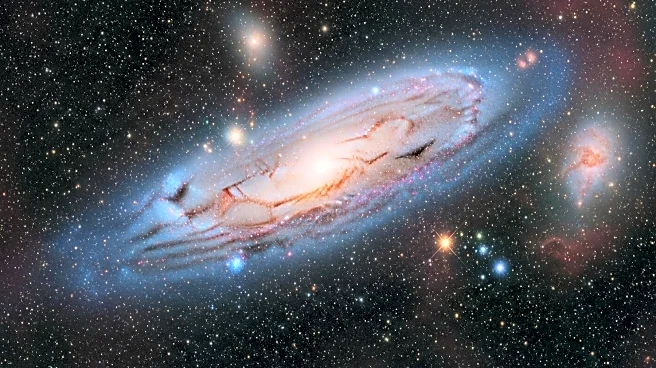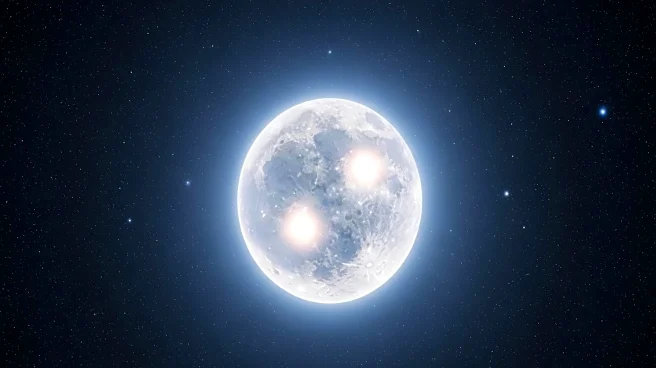What's Happening?
Astronomers from the University of Warwick have identified a frozen, water-rich planetary fragment being consumed by a white dwarf star, WD 1647+375, outside our solar system. This discovery was made using ultraviolet spectroscopy from the Hubble Space Telescope, which revealed the presence of volatiles such as carbon, nitrogen, sulfur, and oxygen in the star's atmosphere. The findings suggest that the icy object, potentially a fragment of a dwarf planet, is at least 3 km across and has been feeding the star for over 13 years. This is the first confirmed case of a hydrogen-atmosphere white dwarf absorbing an icy planetesimal.
Why It's Important?
The discovery provides compelling evidence that icy, volatile-rich bodies exist in planetary systems beyond our own, which could have implications for understanding the development of life on other worlds. The presence of nitrogen, a key chemical fingerprint of icy worlds, suggests that such objects could deliver water and other life-sustaining elements to planets. This finding also highlights the unique role of ultraviolet spectroscopy in detecting volatile elements, which could be crucial for future searches for life-building blocks around other stars.
What's Next?
Further research is needed to determine whether the icy object originated in the planetary system around the original star or is an interstellar comet captured from deep space. The study underscores the importance of ultraviolet spectroscopy in probing the composition of rare volatile-rich objects beyond our solar system, which could lead to more discoveries of similar icy bodies.
Beyond the Headlines
This discovery opens up new avenues for understanding the composition and evolution of planetary systems. It also raises questions about the potential for life in other parts of the universe, as icy bodies like the one found could play a crucial role in delivering essential elements for life. The study also demonstrates the potential of white dwarfs as 'cosmic crime scenes' that can reveal the composition of planetesimals through their chemical fingerprints.

